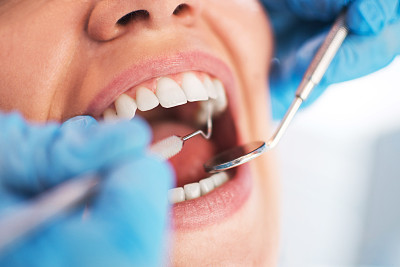The Essential Guide to Extracting a Tooth Safely and Comfortably for Optimal Oral Health and Recovery
Summary: Extracting a tooth can be a daunting experience for many, but it is sometimes necessary for optimal oral health. This guide provides essential information on how to perform tooth extraction safely and comfortably. It covers the importance of consulting with a dental professional, preparing adequately for the procedure, strategies for a smooth extraction process, and vital post-operative care tips for a swift recovery. By understanding these aspects, patients can ensure a less stressful experience and successful healing.
1. Importance of Consulting a Dental Professional

Before considering a tooth extraction, it is critical to consult with a qualified dental professional. Dentists have the expertise to assess the need for extraction based on various factors, including oral health status and potential complications. Ignoring professional advice may result in further dental issues or unnecessary pain.
Dentists also take various diagnostic measures, such as X-rays, to examine the tooth and its surroundings. This comprehensive examination can help determine the best approach for extraction, ensuring that the procedure is tailored to the individual’s needs. Such a personalized strategy improves overall safety and comfort during the extraction.
Additionally, consulting a dentist provides patients the opportunity to discuss any concerns or anxieties they may have about the procedure. Addressing these fears can significantly enhance comfort levels, making it a more manageable experience for everyone involved.
2. Preparing for the Tooth Extraction Procedure
Preparation is key to a successful tooth extraction. Patients should follow their dentists guidelines, such as avoiding certain medications that may exacerbate bleeding or interfere with anesthesia. Informing the dentist about any allergies or medical conditions is vital for safety purposes.
Additionally, patients are advised to organize their schedule around the extraction appointment. It is ideal to have someone accompany them to the dental office, as this provides emotional support and helps with transportation post-procedure. After all, many people experience grogginess due to sedative medications or anesthesia.
Nourishment is also an essential aspect of preparation. Patients should consider having a light meal before the appointment, but its crucial to follow the dentists advice regarding fasting before anesthesia administration. Understanding these aspects can significantly reduce anxiety and pave the way for a positive experience.
3. Strategies for a Smooth Extraction Process
During the extraction, professionals employ various techniques to ensure comfort and minimize pain. Local anesthesia is commonly used to numb the area, but alternative sedation options are also available for those with heightened anxiety. Discussing these options with the dentist can help alleviate fears before the procedure begins.
Furthermore, the dentist will take deliberate steps in extracting the tooth to prevent complications such as breaking the tooth or damaging surrounding tissue. Maintaining open lines of communication is crucial; patients should not hesitate to express discomfort during the procedure, allowing the dentist to make adjustments as needed for comfort.
Proper technique and handling can greatly influence the extraction’s success. Dental professionals often emphasize the need for a controlled and gentle approach, minimizing trauma to both the tooth and the surrounding gums. This focus not only ensures a smoother extraction but also promotes quicker healing afterward.
4. Essential Post-operative Care for Recovery
Post-operative care is a vital component of a successful recovery. Following tooth extraction, patients receive specific aftercare instructions. Properly managing pain and swelling is crucial and may involve medications prescribed by the dentist. Ice packs can also be beneficial in reducing inflammation.
Maintaining oral hygiene after an extraction is equally important. However, patients are usually advised to avoid brushing the extraction site for the first 24 hours. Instead, gentle rinsing with saltwater can help keep the area clean without causing further damage.
Finally, keeping an eye on recovery progress is essential. If any signs of infection or complications arise, patients should reach out to their dentist immediately. Regular follow-ups are also beneficial to ensure that recovery is on track and that any additional treatment is promptly administered if needed.
Summary: In conclusion, extracting a tooth safely and comfortably is an achievable goal with the right knowledge and preparation. Understanding the importance of consulting a dental professional, preparing adequately, focusing on smooth extraction techniques, and implementing proper post-operative care can make the process more manageable for patients. These components together ensure optimal oral health and a smooth recovery.
This article is compiled by Vickong Dental and the content is for reference only.



